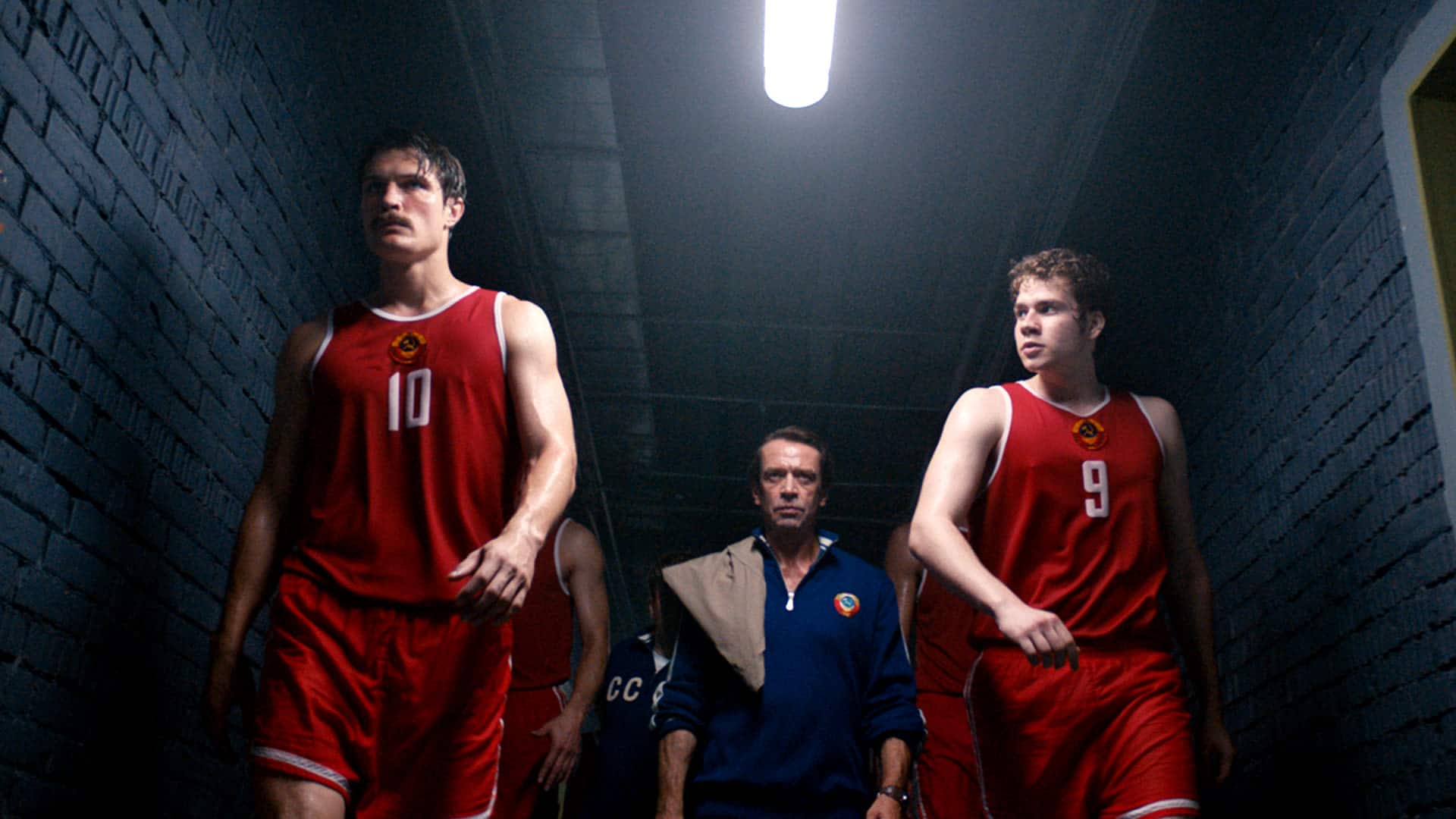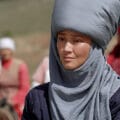Движение вверх (known as Going Vertical or Three Seconds in English) broke the record of highest earning Russian film at the global box office shortly after its release in late 2017. According to Russia’s KinoPoisk, it earned a grand total of nearly sixty million dollars. Although the record has again been broken by other films, Движение вверх is still thought of as a great achievement of modern Russian film, pleasing both audiences and critics.
The movie was directed by Anton Megerdichev and produced by Three T Productions, and has received multiple awards and nominations. Движение вверх won the APKIt award winner for Best Feature Film in 2018 and received the Golden Eagle Award in 2018 in four categories: best actor (Vladimir Mashkov), best supporting actor (Kirill Zaytsev), best cinematography (Igor Grinyakin), and best sound (Aleksey Samodelko).
It is a sports drama based on real events that transpired at the 1972 Munich Olympics. There, the Soviet Union’s basketball team defeated the United States’ team in the last three seconds of the final game.
I viewed the movie as an intermediate Russian speaker and offer in this article a brief analysis of the film, as well as advice for Russian language learners for enjoying the movie as a learning tool.
Движение вверх is available through the Russian streaming service ivi.tv, which has a great variety of Russian films and series.
Synopsis of Движение вверх (Moderate Spoilers)
In order to follow a Russian movie without English subtitles, it is advisable to start with an English-language synopsis.
The beginning of Движение вверх shows the controversial hiring of Coach Vladimir Garanzhin to lead the USSR national basketball team into the 1972 Olympics. Garanzhin goes on to select a new team. The previous team was predominantly players from Moscow; the revised team searched the full USSR for talent.
The movie has several engaging scenes detailing Garanzhin’s unique training regimen for his players, and it depicts early victories for the team in championship games throughout Europe. In his fervor, Garanzhin announces that the USSR team will beat the U.S. team in the upcoming Olympic Games, despite the fact that the U.S. basketball team had won seven consecutive gold medals. Though he is met with angry responses to this brazen statement, Garanzhin continues to work hard on honing the skills and athleticism of his team, even after discouraging defeats endured throughout a tour of the United States.
Players on the national team provide several interwoven plots, such as Alexandr Belov’s romance and medical condition, team captain Sergey Belov’s intense solo training and knee injury, and the struggles of players like Modestas Paulauskas, from the Soviet Republic of Lithuania, in representing the Soviet Union on the international stage.
In the final forty minutes of the movie, viewers get to witness a dramatized showdown between the USSR and U.S. competing for the gold medal. This segment shows the desperation of the coaches and audience, the wild cheering of the American fans, and the impressive maneuvers carried out by both teams. Tension is maintained throughout the reenactment as the American team desperately attempts to close the gap in scores, but the true climax of the movie occurs when the referee calls for the last three seconds of the game to be replayed due to a mistake. These three seconds are slowed down so that viewers can feel the intensity of the moment as the Soviet players make an extraordinary play across the entire court to score the winning shot.
The excitement is palpable as the game flips to favor the Soviet team, and at the end of the film, the players all choose to give their checks to their coach so that he can afford a crucial medical treatment for his son.
Viewing Движение вверх as an Intermediate Russian Language Learner
Because Движение вверх is a sports drama, much of the speech in the film is fast-paced and less enunciated than in other films. Despite this, it was a valuable experience viewing the film as an intermediate Russian speaker. Because the film takes place partly in the United States and in other places, there are Russian subtitles in various scenes, as well as some English spoken throughout the film. This helps in understanding how some English phrases are effectively translated into Russian and brings the viewer into an interesting perspective of hearing English in a context in which it is a foreign language. There are also, of course, many common phrases and words in Russian to pay attention to and add to a working Russian vocabulary.
Below are some words and phrases to get acquainted or reacquainted with before you enjoy the film.
Words to Review: СССР/Советский союз (Soviet Union), далеко (far), просто (simply), козёл/козлы (goat), проспектив (prospect), главный (main), нормально (okay, normal), полезно(helpful), тренировка (workout), товарищ (comrade), главный тренер (head coach), до конца (until the end), в обще (in general), оставаться/остаться (to remain), бегать/бежать (to run), говорить/сказать (to say), верить/поверить (to believe), бывать/побывать (to be), хотеть/захотеть (to want), выигрывать/выиграть (to win).
Beginner Vocabulary Words: американский (American), граница (border), контрол (control), икра (caviar), клоуны (clowns), капитан (captain), лучше (better), лекарство (medicine), извините (excuse me, sorry), нет денег (no money), играть (to play), спортсмен (athlete).
As you watch, relax, and see how much Russian you can understand. While it is difficult to watch Russian films without the aid of English subtitles, and you will not understand everything, watching Russian films is very beneficial to your comprehension and speaking skills!
Analysis of the Film
Движение вверх has been given a 6.6 rating from the IMDb, 8.8 from ivi.tv, and 7.5 from KinoPoisk.
Actors in the film have received great acclaim for their performances, most notably Vladimir Mashkov for his portrayal of Coach Garanzhin and Kirill Zaytsev for his portrayal of Sergey Belov, the team captain. Overall, the acting in the movie is part of what gave it its success, as the cohesiveness and camaraderie of the USSR team makes the film both enjoyable and convincing.
As mentioned above, the cinematography work of Igor Grinyakin has also received acclaim, and after watching the film, the reasons are apparent. Some of the most impressive aspects of the cinematography are the shots of the athletes training next to gymnasts, the scene in which Garanzhin continues to reflect on his cut-off phone call with his wife during a game, and of course, the cuts between games and Garanzhin furiously scribbling in his playbook, which make it appear as if he is writing the playing into existence.
Движение вверх portrays life for Soviet citizens, athletes, and people with serious medical issues, as well as themes of diversity within the Soviet Union, stereotypes Soviet players faced, and the rivalry between the U.S. and the USSR even on the basketball court during the Cold War. The film has been criticized for taking liberties with the stories of the coach and players. However, its overall impact of conveying the victorious moment for the Soviet team and demonstrating the common struggles of citizens of various nations and backgrounds, make it a film well worth watching.
Watch the full movie here.
See real footage of the winning shot here.











